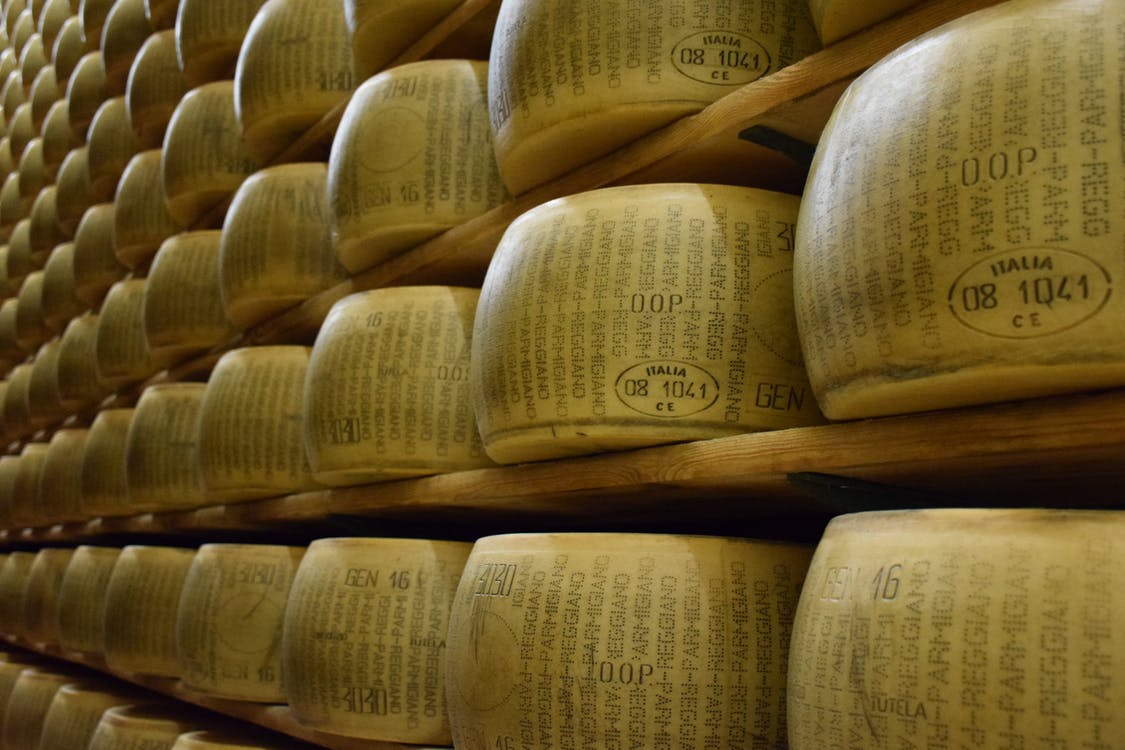Served as part of a dish or part of the well-known cheese board, cheese is one of the most popular foods in the world. Legend says that the process of cheese making dates from 8000 BC and that cheese was discovered accidentally by an Arab trader who used a container made from the stomach of an animal to store milk. Because of the rennet in the stomach, milk stored in such container turned to curd.
Nowadays, with over 1800 different types of cheese, it is easy for everyone to find a flavor and texture they like. That’s why there are so many different recipes that include this ingredient, and why it can be seen on almost any restaurant’s menu. Also, interesting flavors of different cheeses and the ability to fit nicely with other foods make cheese an inspiration to many chefs for making countless new delicious meals.
Cheeses are produced and consumed all over the world. While the United States is holding the first position as the greatest cheese producer, Greece and France are the biggest consumers of this product.
Although cheese is produced in numerous countries, some types are carrying a specific, protected name that is linked to the country of origin of the cheese. That means that if it is not produced from specific ingredients, in a specific way, and in a specific geographical region it cannot carry that name.
What are common types of cheese?
Cheese comes in many sizes, shapes, and flavors. The largest cheese ever made was Cheddar cheese made in 1989 and it weighed 56,850 pounds. Cheese is usually produced in blocks, wheels, cylinders or pyramids. The shape depends on ripening, salt absorption, pressure or simply the tradition of the place where it originates.
The color, texture, and flavor of cheese are determined by the manufacturing process and the type of ingredients used during this process.
Since the manufacturing process can be very complicated, good cheese doesn’t come cheap. The most expensive cheese is made from moose milk. It comes from Sweden and it is sold for £300 a pound.
Different origins of milk, the use of natural or pasteurized milk, type of bacteria used during milk processing, the presence or absence of mold, are all factors that affect the final look and taste of cheese. For example, if the cheese is made from sheep’s milk it will have a grassy flavor, while the one produced from cow’s milk will be sweeter.
Also, the aging process plays a big role in differentiating one type of cheese from another. During this process cheese is kept in a temperature-controlled environment which affects the flavor of cheese, making it more intense.
There are fresh, whey and stretched curd cheeses depending on how long they are exposed to the process of aging.
Furthermore, cheese can be soft to hard, depending on the moisture content in it. When it comes to mold in cheese, which some people don’t like it while others think it is delicious, there are three main categories of this famous product: soft ripened cheese, washed-rind cheese, and blue cheese.
How to properly store and label cheese?
Different kinds of cheeses need different ways of storing. Storing cheese properly means keeping it in a way that preserves its texture and flavor. Some types can be stored in the fridge for a week or even a month. But, whether you are a cheese producer or simply a cheese lover, when it comes to storing cheese, it is always good to have in mind the expiration date that can be found on the cheese packaging label. It is advisable not to use cheese or any other product after the expiration date noted on the product label.
An expiration date, as well as the statement of identity, brand name, and ingredient list, should be part of the label on cheese packaging since these pieces of information are important both to consumers and producers. They allow producers to inform consumers about the product, so it can be used in the best and safest way.
Take a look at this educational infographic and discover some interesting tips on how to properly store various kinds of cheese. Also, it shows some important do’s and don’ts when it comes to correct labeling this famous dairy product.

